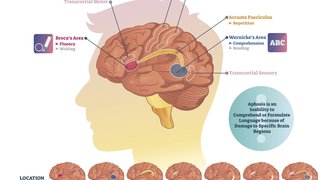
The good news for women is that they generally live longer than men. The less than great news is that the risk for stroke increases with age, which means that women typically have a higher stroke risk.
In 2016, about 55,000 more women than men will have a stroke. More women than men die from stroke each year because older women outnumber older men. Strokes are the leading cause of disability for women, and they kill twice as many women as breast cancer.
Stroke ranks No. 4 among all causes of death, behind heart disease, cancer, and chronic lower respiratory disease. However, it’s the third-leading cause of death among women, and women accounted for almost 60 percent of stroke deaths in 2013.
In fact, strokes are so common in Texas that we’re included in the “Stroke Belt” – an area from Virginia down to Florida and west to Texas that has America’s highest rates of morbidity and death from stroke.
May is National Stroke Awareness month, and it’s the perfect time for women to think about their heart health and how it affects their risk for stroke. With that in mind, let’s discuss why women are more at risk, how women tend to handle their unique symptoms, and how we all can stay healthy together.
Women’s heart health and stroke risk
There are specific reasons why the risk of stroke is higher in women than men, including:
- Postmenopausal changes: The risk for vascular diseases increases as we age, and certain conditions that arise after menopause can increase that risk. These include high blood pressure, high cholesterol, and diabetes.
- Preeclampsia/eclampsia: This condition can double a woman’s risk of having a stroke for years after the pregnancy.
- Cerebrovascular disorders: Women have a higher rate of aneurysms and subarachnoid hemorrhage, which is bleeding in the area between the brain and the thin tissues that cover it. This is an additional risk factor for stroke.
- Migraines with aura: This condition can more than double a woman’s risk of stroke.
- Hypertension: High blood pressure is one of the most common – and most treatable – risk factors for stroke.
- Atrial fibrillation: Women generally have a higher rate of atrial fibrillation (AFib, or irregular heart rhythm) then men. AFib is a major risk factor for large embolic strokes. In fact, having AFib puts a person at five times greater risk for stroke.
Women also should pay attention to other stroke risk factors, in particular those that are related to cardiovascular disease. It’s important for all people to keep their hearts healthy, and women should be particularly mindful of this to decrease their risk of stroke.
How symptoms of stroke in women differ from men
In general, men and women face the same stroke symptoms, including sudden onset of:
- Confusion
- Difficulty walking, balancing, or speaking
- Numbness or weakness
- Severe headache with no apparent cause
- Vision problems
However, women often report these additional stroke symptoms:
- Difficulty breathing
- Fainting or loss of consciousness
- Feeling weak all over
- Hallucinations
- Hiccups
- Seizures
- Sudden behavior changes or agitation
- Vomiting or nausea
The way men and women tend to react to their symptoms also is notably different. Men are infamous for minimizing their symptoms. They don’t assign a high degree of urgency or importance to them and often shrug them off.
Women, on the other hand, acknowledge their symptoms but try to assign other reasons for not feeling well. For example, a woman is likely to say her blood pressure is high because she’s upset about something or recently started a new medication, or to say she’s in pain or feels weak because she didn’t sleep well, and so forth.
Women also tend not to seek care for stroke symptoms because they don’t want their friends or family to worry. Or sometimes, they don’t want to deal with a serious medical diagnosis because too many people depend on them.
But when stroke symptoms occur and you don’t act quickly, severe and sometimes catastrophic consequences can ensue. You may not be able to do simple things like go to the grocery store alone or pick up your kids or grandkids. Women must ask themselves, is avoiding a visit with the doctor worth living that way?
What you can do to prevent stroke
I tell men and women alike that, first and foremost, heart-healthy lifestyle changes can dramatically decrease stroke risk:
- Eat in moderation. Include leafy greens, fruits, and lean meats, and consume less sodium.
- Exercise more. I recommend moderate exercise, three to four times a week.
- Check your blood pressure. A quarter of Americans have high blood pressure. Check your blood pressure daily at home and provide the readouts to your doctor. The doctor can help you calibrate your monitor to make sure it reads correctly.
- De-stress. Take walks with friends or practice yoga or meditation.
- Get routine well checks. Seeing your doctor regularly can help you stay on top of existing risk factors and prevent new ones from developing.
- Stop smoking. Smoking increases high blood pressure, which is a major risk factor for stroke.
Medication also can help support a healthy heart and reduce stroke risk. There are several ongoing studies of drugs for heart disease and AFib, and we’re working on how these drugs may be used to safely, effectively prevent stroke.
In the past, some stroke prevention medications that were designed to reduce clotting also increased the risk of bleeding. Drugs like warfarin often have food and drug interactions that were difficult to manage. Plus warfarin has to be monitored with frequent blood tests.
However, oral medications such as new oral anticoagulants (NOACs) are safe and effective and may even reduce the risk of bleeding. Also, there are no food or drug interactions to manage with NOACs. The older drugs may be cheaper, but in my mind the risks just aren’t worth it for most people.
Healthier lifestyles, healthier communities
Unfortunately, it sometimes takes suffering a stroke to really catch people’s attention and get them to focus on their health. After a stroke, most patients want to do whatever they can to avoid another because they know how awful a stroke can be and how long it can take to recover.
Theoretically, if men and women lived healthier lifestyles, and all of their risk factors were identified and well treated, the risk of stroke overall would decrease by about 80 percent. Leading a healthy lifestyle includes identifying risk factors, working with your doctor to control those risk factors, and seeking medical care right away when stroke symptoms occur. Nationally, this could result in 600,000 fewer strokes.
There’s no better time than right now to start focusing on healthy lifestyle choices, not only to detect and treat risk factors, but also to enjoy a healthier life together. Remember, the best way to treat stroke is to prevent it!










